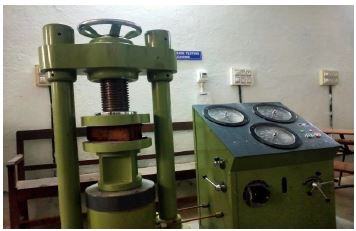Study of Physical, Durable and Microstructural Behaviour of Laterite Soil Based Geopolymer Bricks
DOI:
https://doi.org/10.5281/zenodo.10910461Keywords:
geopolymer, laterite soil, stone dust, fly ashAbstract
Bricks are the major building materials used in the field of construction. The most commonly used bricks are clay bricks and concrete blocks. The discharge of carbon di oxide into the atmosphere has been increasing day by day. For the production of burnt bricks, usually 22 tons of coal were burnt which produces nearly equal amount of carbon di oxide. The most vital role in terms of construction material is usually associated with Portland cement. Since the manufacture of cement leads to the liberation of CO2 in large quantity. So, an alternate is required to replace cement in the place as binding agent. Therefore, the alternative to these is the Geopolymer bricks. Geopolymers have great mechanical properties, and has the synthetic temperature of 250C to 800C. In this study, Laterite soil is used to prepare the bricks by using Geopolymer as a binding material by varying NaOH to Na2SiO3 ratio in Geopolymer precursor. Strength, durable and microstructural behavior of the brick is studied.
Downloads
References
B. Vijaya Rangan, Djwantoro Hardjito, Steenie E. Wallah, & Dody M.J. Sumajouw. Studies on fly ash – based geopolymer concrete.
Tinayu Xie, & Togay Ozbakkalgu. (2015). Behavior of low-calcium fly and bottom ash-based Geopolymer concrete cured at ambient temperature. Ceramics International.
Weibo Ren, Jinyu Xu, Junliang Liu, & Haoyang Su. (2015). Dynamic mechanical properties of geopolymer concrete after water immersion. Ceramics International.
Ramin Hosseini Kupaei, U. Johnson Alengaram, Mohd Zamin Bin Jumaat, & Hamid Nikraz. (2013). Mix design for fly ash-based oil palm shell geopolymer lightweight concrete. Construction and Building Materials.
Gowthami MER. (2016). Manufacture of geopolymer fly ash bricks using class C fly ash. International Journal of Advanced Researched and Development.
Hans F. Winterkorn, & E. C. Chandrashekaran. Laterite soils and their stabilization. ASTM Special Technical Publication No. 79, p. 83.
J.O.Akinmusuru. (1984). Lateritic soil-cement bricks for rural housing. The International Journal of Cement Composites and Light Weight Concrete, 6.
Kolli. Ramujee, & M. Potharaju. (2016). Mechanical properties of geopolymer concrete composites. 5th International Conference of Materials Processing and Characterization.
C. D. Udawattha, A.V.R.D Lakmini, & R.U Halwatura. (2018). Fly ash-based geopolymer mud concrete block. Moratuwa Engineering Research Conference.
Venugopal K, Radhakrishna, & Vinod sasalatti. (2016). Development of alkali activated solid and hollow geopolymer masonry bricks. IOP Conf. Series: Materials Science and Engineering.
Shankar H. Sanni, & Khadiranaikar R.B. (2012). Performance of geopolymer concrete under severe environmental conditions. International Journal of Civil and Structural Engineering.
L. Krishnan, S.Karthikeyan, S. Nathiya, & K.Suganya. (2014). Geopolymer concrete an eco-friendly construction material. International Journal of Research in Engineering and Technology, NCAMESHE.

Downloads
Published
How to Cite
Issue
Section
ARK
License
Copyright (c) 2024 Shivaraju G D, Dr. Asha K

This work is licensed under a Creative Commons Attribution 4.0 International License.
Research Articles in 'Applied Science and Engineering Journal for Advanced Research' are Open Access articles published under the Creative Commons CC BY License Creative Commons Attribution 4.0 International License http://creativecommons.org/licenses/by/4.0/. This license allows you to share – copy and redistribute the material in any medium or format. Adapt – remix, transform, and build upon the material for any purpose, even commercially.










